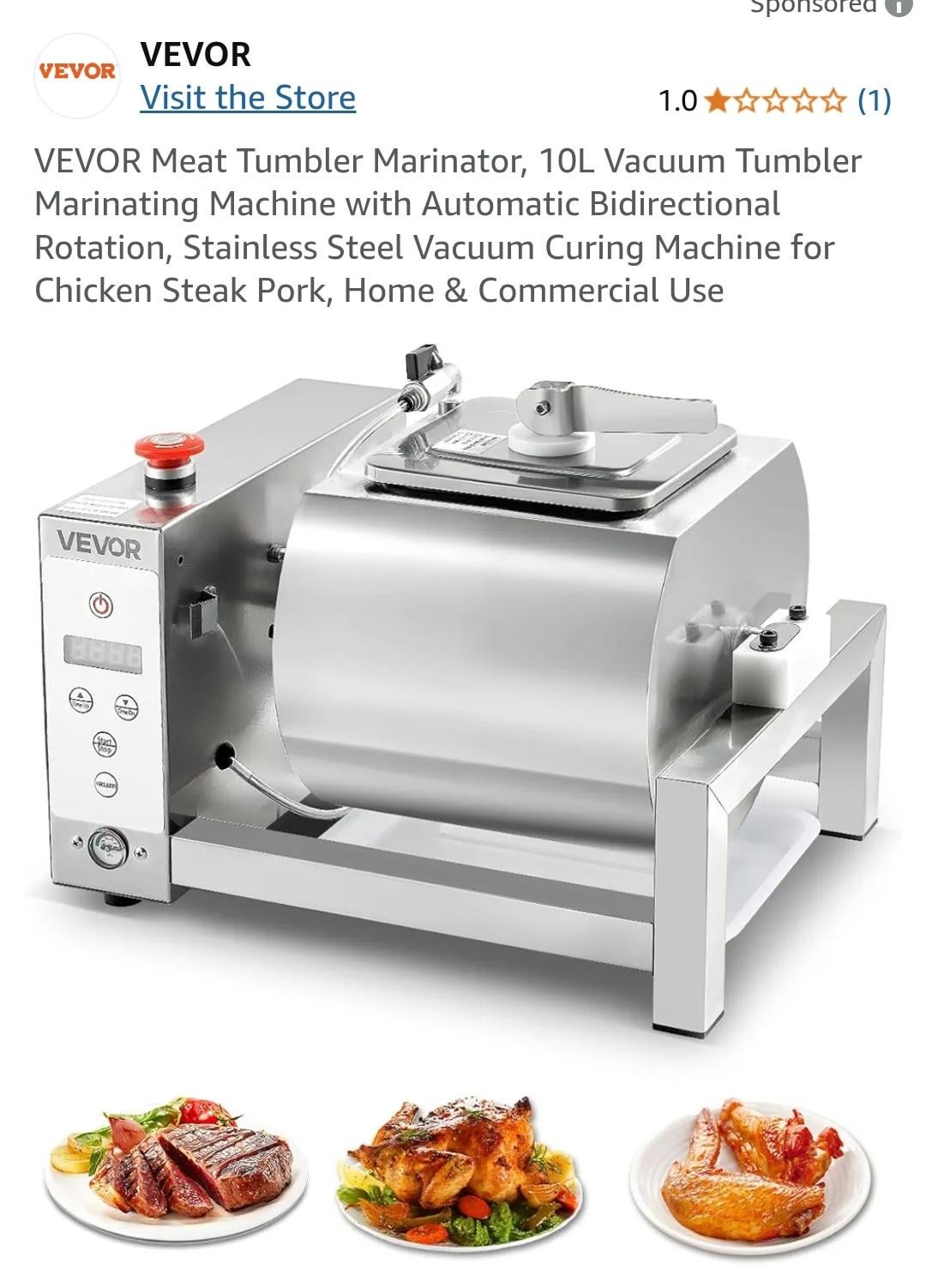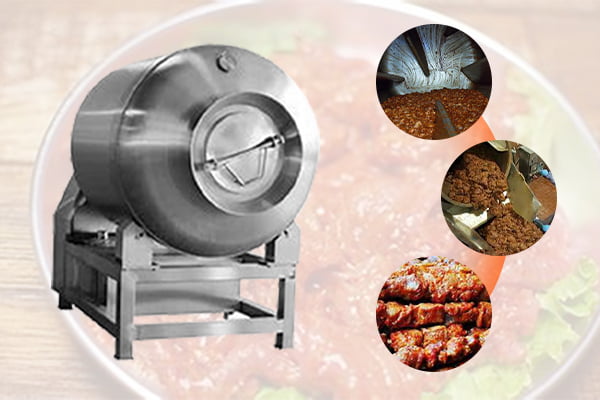10 years of experience as a food machinery equipment manufacturer
10 years of experience as a food machinery equipment manufacturer
In the realm of modern food processing, particularly within the meat, poultry, and seafood sectors, efficiency, product quality, and consistency are paramount. One piece of equipment that has become increasingly indispensable in achieving these goals is the vacuum meat tumbler. Among the various options available, the AGS vacuum meat tumbler presents itself as a noteworthy solution designed to enhance marination, tenderization, and overall product value. This technology leverages the principles of vacuum and mechanical action to transform raw meat products, preparing them for subsequent cooking, curing, or packaging.

Vacuum meat tumbling is a process that involves placing meat products, along with marinades, spices, or brines, into a rotating drum under vacuum. The primary objectives are to improve the absorption of marinades, enhance tenderness, increase product yield, and ensure a uniform distribution of ingredients. Traditional marination methods can be time-consuming and may not always result in deep or even penetration of flavors. Vacuum tumbling significantly accelerates this process and improves its efficacy.
The vacuum environment created within the tumbler plays a crucial role. By removing air from the drum and from within the meat’s pores, it creates a pressure differential that facilitates the rapid uptake of marinade into the muscle fibers. This process also helps to expand the muscle structure slightly, allowing for better moisture retention and a more tender final product. The mechanical tumbling action further contributes by gently massaging the meat, which helps to break down tougher muscle fibers and evenly distribute the marinade throughout the batch.
The AGS vacuum meat tumbler is engineered to provide reliable and consistent performance in demanding food processing environments. Several key features contribute to its operational effectiveness and the quality of the processed product.
Construction and Design: Typically, AGS tumblers are constructed from high-grade stainless steel, often 304 or 316, which is essential for food safety, durability, and resistance to corrosion from salts and acidic marinades. The interior of the drum is usually polished to a smooth finish, facilitating easy cleaning and preventing product adhesion. The design often incorporates ergonomically considered loading and unloading mechanisms, which can range from manual tilting to fully automated systems depending on the model’s size and sophistication.
Vacuum System: A core component is its efficient vacuum system. This system is designed to achieve and maintain a specific vacuum level within the tumbling drum. Precise control over the vacuum is important, as different products may benefit from varying levels. A robust vacuum pump and reliable sealing mechanisms are integral to this system, ensuring that the desired pressure is consistently held, which is critical for optimal marinade penetration and deaeration of the product.
Tumbling Mechanism: The tumbling action in an AGS unit is carefully calibrated. The drum’s rotation speed is often variable, allowing operators to customize the process according to the type and tenderness of the meat being processed. Inside the drum, baffles or flights are strategically designed. These elements lift and drop the meat gently, ensuring thorough mixing with the marinade and providing the necessary mechanical action for tenderization without causing excessive damage to the product structure. Some models may offer reversible drum rotation to further enhance the mixing and massaging effect.
Control System: Modern AGS vacuum meat tumblers are generally equipped with advanced control systems. These can range from simple timers and manual controls to sophisticated PLC (Programmable Logic Controller) based systems with touchscreen interfaces. Such systems allow for the programming and storage of multiple processing recipes, specifying parameters such as total tumbling time, tumbling duration, rest periods, rotation speed, and vacuum level. This level of automation ensures consistency from batch to batch and reduces the need for constant operator intervention.
Capacity and Scalability: AGS tumblers are available in a range of capacities, from smaller units suitable for butcher shops or pilot plants to large industrial-scale machines capable of processing thousands of pounds per batch. This scalability allows businesses of different sizes to integrate this technology into their operations.
The effectiveness of vacuum tumbling, as facilitated by machines like the AGS tumbler, stems from a combination of physical and chemical changes induced in the meat product.
The versatility of the AGS vacuum meat tumbler makes it suitable for a wide array of applications within the food processing industry. Processors of various types of meat products can benefit from its capabilities:

Red Meat Processing: Used for marinating beef steaks, pork chops, lamb cuts, and for preparing products like corned beef or pastrami. It helps to achieve consistent flavor profiles and desired tenderness.
Poultry Processing: Ideal for marinating chicken breasts, thighs, wings, and turkey products. It enhances the succulence and flavor of poultry, which can sometimes be prone to drying out during cooking.
Seafood Processing: While requiring gentler handling, certain types of seafood can also be processed in vacuum tumblers to improve flavor absorption and texture.
Processed Meats: Essential in the production of items like ham, bacon, sausages, and deli meats, where the even distribution of curing agents, spices, and moisture is critical for product quality, safety, and shelf life.
Value-Added Products: Enables processors to create a wider range of value-added products, such as pre-marinated ready-to-cook items, which command higher prices and meet consumer demand for convenience.
When considering a vacuum meat tumbler like those offered by AGS, several factors should be evaluated. The required batch capacity is a primary consideration, along with the types of products to be processed, as this may influence the need for specific features like gentle handling modes or specialized baffle designs. The level of automation desired, ease of cleaning and maintenance, footprint of the machine, and overall build quality are also important aspects. Processors should look for equipment that not only meets their current needs but also offers some flexibility for future product development or expansion.
In conclusion, the AGS vacuum meat tumbler represents a significant technological advancement for the meat processing industry. By optimizing the marination and tenderization process through controlled vacuum application and mechanical action, it enables businesses to improve product quality, increase yield, enhance operational efficiency, and achieve greater consistency. As consumer demand for high-quality, flavorful, and convenient meat products continues to grow, an investment in such technology can be a key factor in maintaining a competitive edge in the marketplace. The systematic approach offered by these machines helps to standardize an otherwise variable process, leading to predictable and superior results.
